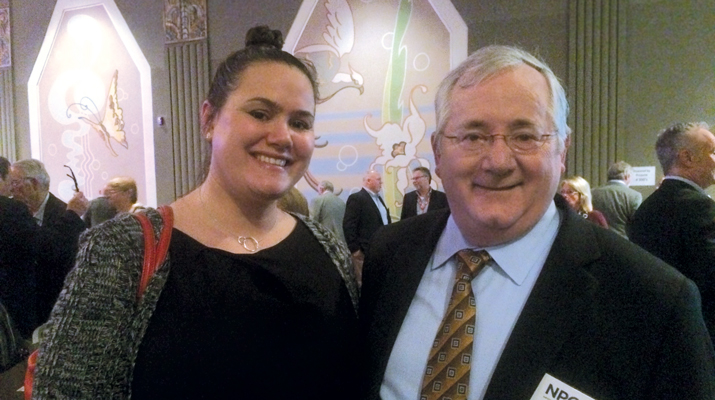What’s up?
It should come as no surprise to propane marketers that the cost of doing business keeps going up, up and up. Industry suppliers are facing similar increases on the raw materials coming into their factory doors, resulting in higher price tags on the products they sell.
 |
Across-the-board price hikes and selected surcharges are on tap from Harsco, which includes Sherwood valves, regulators and float gauges, plus the line of propane vessels produced by American Welding & Tank (AWT).
“The entire catalog of Sherwood compressed gas and LP products will be affected by the new price levels,” says Scott W. Boyd, vice president of sales and marketing for Compressed Gas Products.
 Across-the-board price hikes and select surcharges on tanks, hose and bobtails are expected to get passed along to propane retailers in 2006. |
“We will be adjusting our base prices and implementing surcharges as applicable. We are now certain that our price structures for 2006 will be elevated compared to current 2005 levels. The only uncertainty is the magnitude of the increases.”
The higher pricing schedules are set to take effect in January. The exact amounts were to be announced in early December, with details remaining fluid at press time.
 The pumps, meters and valves that go into a bobtail’s construction are all going up in cost, along with the steel and aluminum content. |
“Our increases will be governed by close analysis of price increases from our suppliers received through the end of November,” says Don Fabricy, AWT vice president of sales and marketing for LP products. “Diesel fuel price increases have had a compounding effect on the cost of trucking raw materials into our multiple manufacturing facilities. Our suppliers have maintained reliable deliveries.”
Price increases are also being closely scrutinized over at Sherwood.
“Sherwood will persevere in efforts to contain and neutralize accelerating costs through production efficiencies and technical product innovations,” says Dino Sciullo, director of operations for Sherwood’s manufacturing complex. “Although our continuing evaluation of the impact of spiraling energy and raw material costs on our manufacturing operations may provide us with clues to potential areas for production process improvements, it is evident that unprecedented energy increases are well beyond our capacity to absorb.
“There is current speculation that well publicized global material shortages may experience some relief by [spring] next year. However, the existing influence of short supply-chain availability is expected to continue to force material costs higher in the near term.”
Tipping point
“This year we’ve seen diesel prices go sky high,” says Lynn Hardin, national sales manager for Quality Steel Corp. “We are just about at the tipping point of having to make a [pricing] change based on the price of diesel. Because of the miles we travel, we have to monitor the diesel market on a daily basis.”
Quality Steel’s transportation costs are up 17 percent.
“The tank is no good to a propane retailer if we can’t get it there,” Hardin says. “We build it, but then we have to get it to the dealer’s location. We’ve seen surcharges fluctuate from month to month on steel.”
Analysts say that because of the ravages inflicted by this year’s Gulf Coast hurricanes, pricing for the three most common resins used to make plastic have jumped 20 to 30 percent since August.
“The plastic dome costs about as much as the steel dome does,” says Hardin.
Even the cost of paint is up based on its petroleum-related ingredients. This equated to a significant increase for Quality Steel, according to Hardin, who noted that Quality’s last price boost was in January 2005.
“We’ve tried to make it as easy on our customers as we could,” says Hardin. “We’ve tried to be sensitive to that.”
“You can only absorb so much,” says Rick Simpson, vice president of sales and marketing for Manchester Tank. “We’ve had customers say, ‘I’m not surprised with all we’ve been hit with.'”
A 2.5 percent energy surcharge has been implemented because of the soaring cost of natural gas used in the manufacturing processes.
Steel’s higher cost has also aggravated a tough business climate, along with a slowdown in industry purchase orders because of last season’s mild winter.
“It’s been off somewhat,” says Simpson. “We haven’t had cold weather; weather drives this business. When we have a good cold snap that goes all the way down to the South our phone rings off the hook.”
Brass is yet another element tarnishing propane’s manufacturing scene.
“We’ve seen a premium on our inbound materials,” says Dusty McClintock, vice president of sales at Worthington Cylinders. “We’re going through our steel negotiations for next season. We’re evaluating our cost position; we’re going to continue to evaluate it.”
McClintock says it’s possible that a raw materials increase could happen, with an end-user pricing decision due sometime in January. The company has already implemented a 10 percent increase for its 16-oz. camping cylinders based on propane’s higher price.
Watching inventories
At Liberty Tanks & Vessels, the supplier has held pricing of the brass valves steady.
“We’re looking at saving through internal improvements and we’re trying to maintain the current price structure,” says Gary James, president of the Midwest and Eastern regions. “It depends on what happens with the steel market. Compared to August, steel is drifting upward.”
In just a month’s time – through September – the cost of hot rolled steel rose 6 percent. Between April and October, the fuel surcharges paid by Liberty shot up 80 percent, with a slight decrease in November.
“It ties right in with the petroleum cost per barrel of oil,” says James, adding that these surcharges, which can be up to 34 percent of the bill, are routinely passed on to the customer.
Because of all this, the propane marketers are buying fewer new tanks. If a given tank is not producing the sought-after income level, it’s often pulled in favor of a smaller model.
“They’re watching their inventories and they’re watching their capital expenditures,” James says. “They’re refurbishing a lot of their old tanks when maybe before they would have bought new ones.”
Like Manchester’s Simpson, James points to last season’s wimpy weather as a key culprit.
“The warm winter didn’t generate the profits that a cold winter does,” says James. “The high propane cost has really hurt the industry the most. In some areas they’re turning back the clock and using other means to heat their homes.”
The pumps, meters and valves that go into a bobtail’s construction are all going up in cost, along with the steel and aluminum content, notes Steve Bloomstrand, vice president of operations at Rocket Supply Corp.
Even worse is the change chugging through the chassis industry, where government-mandated, pollution control requirements and the resulting hit to engine manufacturers has pushed the base pricing up 10 to 15 percent.
“It’s really a pass-through on the chassis,” says Bloomstrand, referring to Rocket’s resolve to control costs through more efficient production strategies. “We’ve tried to absorb as much as possible. [Propane marketers] can shop with us and get the whole package.
“They’re much more conscious of the cost of the bobtails. It’s a tougher market out there. We’ve seen our customers operating their equipment longer than they would have.”
Arnold “Butch” Amthor, executive vice president at Amthor International, has a more succinct view of the propane marketplace: “Everything is going nuts,” he says.
Amthor has been trying to absorb costs that continue to zoom upward, yet increases in welding wire, steel surcharges (doubling over the past year-and-a-half) and the chassis issue brought about a 3 percent price hike in October with another being considered for January – perhaps 2 to 3 percent.
Amthor says potential customers are not buying new; they’re just refurbishing the old chassis.
Smart Hose raised its prices 4 percent in the spring, the first increase in two years.
“It had to do more with the metal surcharge than anything,” says Andy Abrams, vice president and managing director.
Sales are way up at Smart Hose, and the company’s ability to buy in high volumes brings stability to the pricing structure.
The largest purchaser of 2-in. LP hose in the United States, Smart Hose buys 10,000 brass fittings at a time, a further example of volume-based buying power.
“Our raw material costs have gone up a lot, and we’re not passing them on to the end-user,” says Brian Davidson, director of sales and marketing at Rego.
A price increase in April was the first in eight years, and the company takes great pride in the quality of what it produces – particularly with the engineering, education and other value-added services it offers, according to Davidson.
“We feel that our product is better than our competitors’ is. We don’t want our customers to treat us as a commodity because there’s a lot more to it,” says Davidson.
A company-wide cost/pricing review is set for February, but Davidson foresees a reasonable outcome.
“We stick with what we commit to customers,” he says.
















